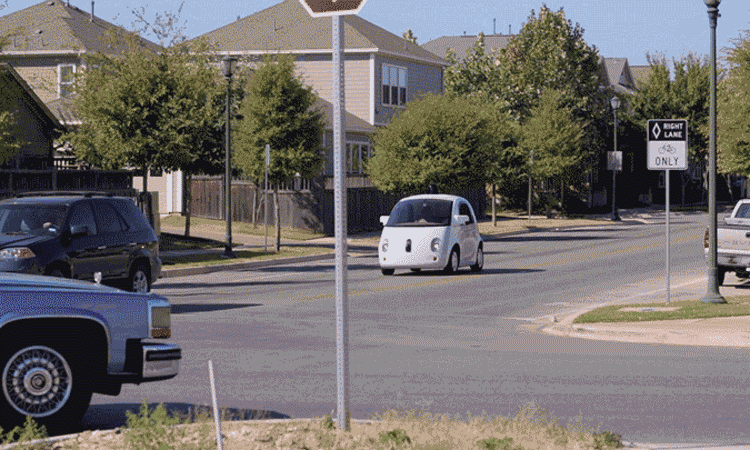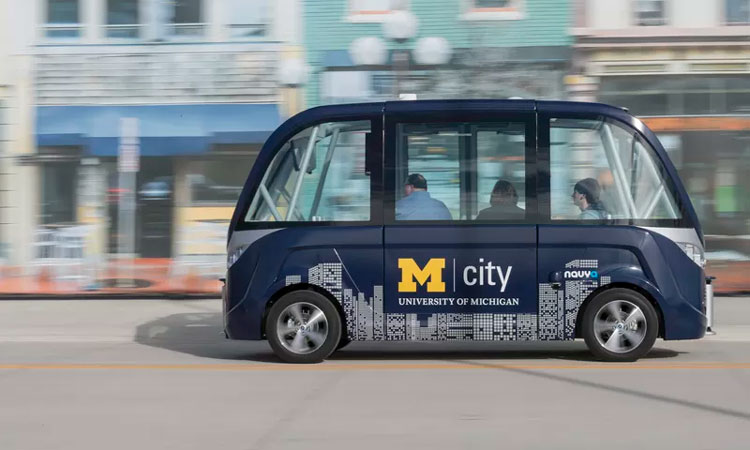Self-driving cars for most people, are just an abstraction, something they read about occasionally in the press but still consider a far-off, futuristic fantasy. They read the headlines and scoff, ‘Not in my lifetime’. But the events of this past month may help put a lot of that skepticism to rest. There was a flurry of activity in both Congress and the private sector over the past few weeks, signaling a key shift in the trajectory of self-driving cars and proving that these vehicles are much closer to reality than most people think.
Experts whose job it is to pay close attention to this emerging technology have been impressed with the pace of developments in the last few weeks. “Out of the past three years that I’ve been researching [autonomous vehicle] policy, this is by far the most important month of Congressional action and partnerships I’ve seen yet,” said Greg Rogers, a policy analyst at the Eno Center for Transportation. “What we’re seeing right now is that autonomous vehicles are moving from their infancy into their adolescence.”
First, and most significantly, the first federal legislation to regulate self-driving cars in the US was introduced on June 20th. These bills — there are 14 of them — would give the US National Highway Traffic Safety Administration (NHTSA) the power to increase the number of self-driving cars on public roads. And they would preempt the current patchwork of state laws regarding the enforcement of autonomous driving. Automakers and the big tech companies are in favor of the bills for two main reasons: they want to get their robot cars on the road faster than their competitors, and they would rather abide by one overarching set of federal laws than 50 individual state laws.
Autonomous vehicles are moving from their infancy into their adolescence.
The package of bill includes a proposal to increase federal motor vehicle safety standard (FMVSS) exemption caps from 2,500 to 100,000 — which is a wonky way of saying that it would allow automakers and tech firms to test (and eventually deploy) autonomous vehicles without steering wheels, brake pedals, and other components designed with humans in mind and required by federal safety standards. Right now, these companies are testing cars that can at best be considered Level 3 autonomous, meaning they still require some human intervention. Some states have passed laws allowing for the testing of higher levels of automation, but most have yet to take up any legislation.
“The enabling factor — and maybe the limiting factor — will be the passage of the laws being considered by Congress right now,” Rogers said. “Companies like Waymo, Uber, and GM (via Lyft) can only get a critical mass of fully driverless cars on the road if Congress expands NHTSA’s exemption authorities and preempts the patchwork of state regulations that are creating a lot of uncertainty right now.”
And even more surprising, there appears to be some bipartisan consensus around these bills, proving that even in a gridlocked, polarized political environment, Silicon Valley and the big automakers still hold enormous sway over politicians. “Silicon Valley is still the golden child of America — the actual shining city on a hill, with Detroit just a little bit behind,” Rogers said. “GOP naturally wants to seize on this opportunity to build up an industry.”
Some experts were surprised by how quickly Congress tackled automated vehicle policy. Jim McPherson, an attorney and consultant on self-driving cars, said that Congressional action was “both long overdue… yet remarkably rapid,” because the Obama administration’s Federal Automated Vehicles Policy just came out last September. “Whether the final bills look like House and Senate drafts is yet to be determined,” he added.
Still, there are a few dissenting voices. Safety and consumer advocates decry the bills as an enormous giveaway to the companies Waymo (née Google) and Uber that are building and testing self-driving cars. Their opposition could hurt the passage of these bills, especially since the motivating force behind self-driving cars is their promise to reduce or eliminate traffic fatalities.
“While we see great potential for the future of autonomous vehicles, basic safeguards and reasonable industry accountability are essential,” Jacqueline Gillan, president of the Advocates for Highway and Auto Safety, testified at a House hearing on the legislation. “Testing and government oversight will not inhibit technological creativity and innovation, but without them, it will inhibit and threaten public protection and acceptance.”
Beyond Washington, DC, a number of key deals were made, giving us a clearer sense of how autonomous vehicles will be physically managed as a commercial asset. Its all fun and games to talk about self-driving cars taking over the roads, saving hundreds of thousands of lives and maybe putting just as many people out of work. But who will operate these cars? Who will own them? And how will we use them? This past month, we finally got some answers.
Alphabet’s Waymo announced a partnership with Avis to manage its fleet of autonomous vehicles in Arizona. Meanwhile, it was revealed that Apple is leasing its small fleet of self-driving cars from Hertz. That’s right: old-fashioned car rental companies are suddenly in vogue.
Legacy car rental companies have long worried about their place in the ‘new mobility’ ecosystem. Over the last year, Hertz stock had dropped by more than 75% amid falling revenue and profit, and investor concern about the role rental companies will play in an automotive industry where self-driving cars and ride-hailing play a greater role. But the news about Apple has sent Hertz’s stock soaring to its highest levels in almost two years. Avis’ stock was also up noticeably.
The headlines sound forgettable at first glance. But both Avis and Hertz have something that most tech companies working on driverless cars lack: a sprawling network of customers and vehicles, and decades-long experience in managing huge fleets of cars with high usage rates.
Theoretically, self-driving cars will need more maintenance than personally owned vehicles, especially if they are deployed in a ride-hailing capacity. Waymo and Uber have said they envision their cars constantly picking up and dropping off passengers, conjuring up the image of the “perpetual trip.” John Krafcik, CEO of Waymo, estimates his vehicles will log around six times more miles per year than average cars. That will mean more wear and tear than your average vehicle — which Avis and Hertz are perfectly positioned to take on.
“Frankly, car rental companies are the best positioned to reinvent themselves and survive in this (for lack of a better term) brave new world of transportation technology,” Rogers said.
There was a bunch more news this past month that pushed the needle forward on self-driving cars. GM announced that it had begun production of 130 more self-driving Chevy Bolts to eventually add to its fleet of 50 that are currently being tested on the streets of San Francisco. Nvidia, one of the largest chipmakers in the world, said it would work with Volvo and Volkswagen to build high-tech “brains” for their self-driving cars. The growing list of partnerships involving self-driving cars underscores the assumption that no one company will be the dominate player in this industry. In the early days, everyone will need to work together to overcome societal roadblocks.
“Don’t expect any of these recent partnership agreements to be long-lived, entirely exclusive, or without an escape clause,” McPherson, the automated vehicle consultant, said. “Parties will use the relationships to learn complementary businesses, try out what works, and try to be first to market with an end-to-end solution. The prize for being first-to-market with a safe, profitable autonomous vehicle is beyond estimation, but at the very least, that company will be worth as much Uber’s valuation.”
Moreover, these announcement may put to rest some of the more nagging questions about self-driving cars. But they probably won’t do much to dampen the skepticism that surrounds this technology. As a species, we have been driving automobiles for well over a century. They wreck our bodies and our souls, but we are addicted to their cold, hard steel. We believe their marketing campaigns when it appeals to our collective sense of rugged individualism. Recent surveys show that the automakers will have to pry the steering wheel from our cold, dead fingers before we let robots take over our roads.
That’s why small experiments, like the one the University of Michigan launched recently, will make a huge difference. Starting this fall, the university plans to deploy two completely driverless shuttles, manufactured by French startup Navya, to service a two-mile route. The shuttle can carry a maximum of 15 passengers, and lacks a steering wheel or pedals.
These experiments allows for more accurate mapping, which in turn leads to more accurate driving. As the technology improves, self-driving cars will be able to drive confidently in wider geographic areas. But the need to start small underpins the skepticism that many people still have toward self-driving vehicles. A gradual roll-out — on university campuses, corporate campuses, and in small, geofenced areas — will help acclimate people to the driverless experience. Once people realize that self-driving cars aren’t going to kill them, and can actually be kind of adorable and convenient, the technology will have truly arrived.
“It has been a very important month for moving this technology past the development stage and into implementation,” said Michael Ramsey, an analyst at Gartner. “Many of the practical roadblocks may soon become apparent, but the momentum behind self-driving vehicles appears sustainable.”



Comments are closed, but trackbacks and pingbacks are open.